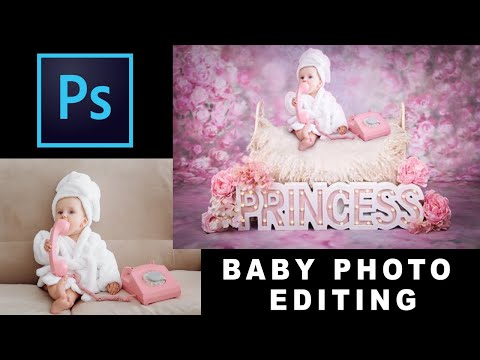Best to use when: working with high contrast images, although it takes a fair bit of time and effort to produce a good outcome.
The Background Eraser tool is great if you need a bit more control over removing the background but still want Photoshop to do some of the heavy lifting for you. For more control, you’ll have to sacrifice some time to get the desired result. Depending on your photo, using the Background Eraser tool could be highly effective and a time saver and/or get you closer to your desired outcome with some time involved.
Steps:
- With your image open in Photoshop, right click your Background layer and click Duplicate Layer. In the dialog box that pops up, name your layer (whatever you’d like), and click OK. Click the eye icon to the left of the original layer to turn that layer off.
- Select the Background Eraser tool from the toolbox on the left-hand side. This tool may be hidden below the Eraser tool. Click and hold the Eraser tool to reveal more options to and select the Background Eraser tool.
- In the tool options bar at the top of the screen, click the brush icon to reveal the brush panel.
- Change the hardness so that it’s near or at 100%.
- The size can be whatever you deem appropriate for the image you’re working with. In this case, I’m starting with 50px.
- You can adjust it as we go by using the square brackets ([ and ]) to decrease and increase the size of the brush.
- Still in the tool options bar at the top, set the Sampling to be Continuous. It’s the first of three icons after the brush size option. Next, set the Limits to Find Edges and the Tolerance to be somewhere in the range of 20–25%.
- Note that the lower the tolerance, the fewer color variations it will pick up. Conversely, the higher the tolerance, the more colors the tool will select.
- Start erasing the background around your subject using the Background Eraser tool by clicking and holding while moving the brush. The goal here is to keep the crosshairs inside the tool from touching your subject. Zoom in on the image if you need to see more close details.
- I recommend you do short strokes with the brush (remembering to let go of the mouse from time to time) so that you can always Undo if the brush goes too far.
- In the more difficult areas, you may find that you need to adjust the size of your brush as you go. You can do this by revisiting the tools option bar at the top, or using [ and ] to adjust down and up the size of your brush.
- If resizing the brush doesn’t work and it’s erasing your subject, undo your action, then go into the tool options bar at the top and adjust the Sampling to Once (the middle icon in the set of three), the Limits to Discontiguous, and Tolerance to around 10%. This is telling the brush to only use the color under the crosshairs in that moment and not resample as you go along.
This process can be quick or tedious depending on your image, but provides good results, as you’re in control of determining what is the subject and what isn’t. If this doesn’t complete the job, other methods mentioned here could help you get closer to your desired result.

